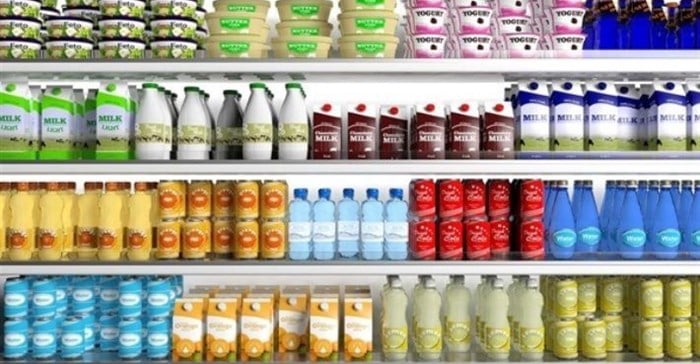
Subscribe & Follow
#AfricaMonth
In the news
Packaging during Covid-19 and beyond

These major disruptions within our lives have also affected businesses. Industries on the frontlines that have endured these challenges include retailers, manufacturers, e-commerce and packaging, to name a few. With the world still anticipating a cure for Covid-19, we need to remain cautious. As a $900bn-a year industry worldwide, what does the world of packaging look like now?
Putting safety first in manufacturing processes
At the start of the pandemic, packaging manufacturers had a difficult juggling act of maintaining employee health and safety and managing disruptions to supply chains, while trying to navigate the demands of evolving market conditions. While research differs on the risks of the virus spreading through packaging, safety precautions in getting products from the factory floor to consumers had to be implemented.
At the Nampak Liquid Cartons plant in Isithebe, KwaZulu-Natal, stringent food safety and hygiene standards were already in place, but these were further enhanced during the pandemic.
Employees follow strict Covid protocols, including having their temperature taken before clocking in, regularly washing hands, maintaining social distances of 1.5-2m and wearing personal protective equipment (PPE). Surfaces are also regularly sanitised. These protective measures implemented by Nampak have been commended by the Department of Labour.
Shifts in consumer behaviour
1. Bulk packaged buying
As the severity of the pandemic became apparent, the initial consumer reaction in many countries was a wave of panic buying. Some of this seemed illogical (such as #toiletpapergate in Australia), but much of it focused on long-life products such as dry, tinned and frozen goods.
While excessive panic buying seems to have subsided, there has been a sustained demand for groceries as consumers choose to avoid restaurants and eating out due to safety concerns, and work habits, such as takeaway coffees and lunch on the go, have moved to more time spent at home.
As disposable income takes a hit due to economic conditions, consumers are also opting for bulk packaged goods, which offer greater value for money than single-serving items, and to avoid frequent outings to crowded, public outlets.
2. Smaller size format
The other side to consumers being squeezed financially in the current economic climate is that buying less in smaller sizes can stretch their budgets further. Smaller size cartons cater to those whose disposable income is measured in the short term, and who buy on a day-to-day basis.
Retailers who want to add value to their consumers’ spending power can also use smaller size cartons in combination deals, such as selling one litre mageu, a loaf of bread and a chocolate together all for a discounted sum.
Pre-Covid, many FMCG companies and retailers were faced with slimmer margins, with this pressure ultimately passed onto the packaging converters. New formats in packaging include smaller, lightweight designs that increase filling efficiency and volume density, while offering shelf appeal.
The rise of e-commerce
With the onset of lockdown, retailers were forced to shut their doors, leading to a shift towards online shopping. Consumers increased their digital engagement buying products through e-commerce channels.
The retail focus is now on getting products safely to consumers, where packaging must withstand the rigours of transportation through resistance technology, as well as undergo sanitation processes. Retailers must minimise the risk of product loss or damage to reduce the potential of financial losses and product returns.
While some consumers will return to physical retail stores, once normality resumes, for others we could see a longer-term change in shopping habits. Many packaging designs will need a major update, especially if they were originally intended for traditional retail channels.
Sustainability vs health and hygiene
Concern over the environmental impact of products remains key. For consumers, sustainability has become a key motivator, with brands increasingly showing their commitment to the environment through cleaner packaging materials and new designs. Liquid cartons are fast becoming a favourite among consumers and manufacturers due to the renewable attributes, recyclable nature, maneuverability, aesthetic appeal and convenience.
With the demand for eco-friendly packaging, manufacturers must ensure it is reusable, recyclable or compostable in its current form, or if recycled, capable of being transformed into other products. For example, paper from liquid cartons once recycled can be made into corrugated boxes; the plastic and foil linings can be turned into roof tiles.
Similarly, consumers increasingly demand hygiene-assured items and single-use wrapped items. These new practices extend to the packaging industry as well. Packaging design must ensure the minimal viability of the virus could significantly influence packaging-material preferences.
One example of the shift in more hygienic packaging is that of traditional sorghum beer. Distributed in large plastic vats for consumption at shebeens and taverns, the beer is then decanted using plastic scuds. If these are not cleaned properly after each use, they are at risk of transmitting the virus.
Sharing the beer among many people through the same vessel also carries health concerns, and open beer drums that aren’t monitored and sealed are susceptible to abuse and meddling, putting drinkers lives at risk. To solve these problems, tamper-proof conical cartons that are sealed and available in single portion sizes are gaining popularity – both retailers and consumers can trust that the beer inside is of high quality, safe and hygienic to drink.
The next normal will put packaging designs in the spotlight as the evolving megatrends reshape the business. Consumer and regulatory pressure to transition to a more circular economy will continue. Spearheaded by the producer responsibility organisation Fibre Circle, awareness of liquid beverage carton recycling in South Africa is about to get a major boost.
Winning designs will have to address the needs of the online channel, sustainability and hygiene while taking pre-, present and post-consumer factors into account.
About Raymond Dube
Raymond Dube, Nampak Liquid Cartons managing director.Related
2 South African agencies awarded in Global ADC 104th Annual Awards 15 May 2025 Gen Alpha are shaping the next frontier of packaging design 8 Apr 2025 RCL vs Berkley: Bumpy legal battle over smooth mageu packaging 3 Mar 2025 ARB rules Bellisima mayonnaise packaging mimics Hellmann’s 24 Feb 2025 Here's what packaging design should look like in 2025 24 Feb 2025 Mattel scrambles after Wicked doll packaging links to explicit site 11 Nov 2024
















